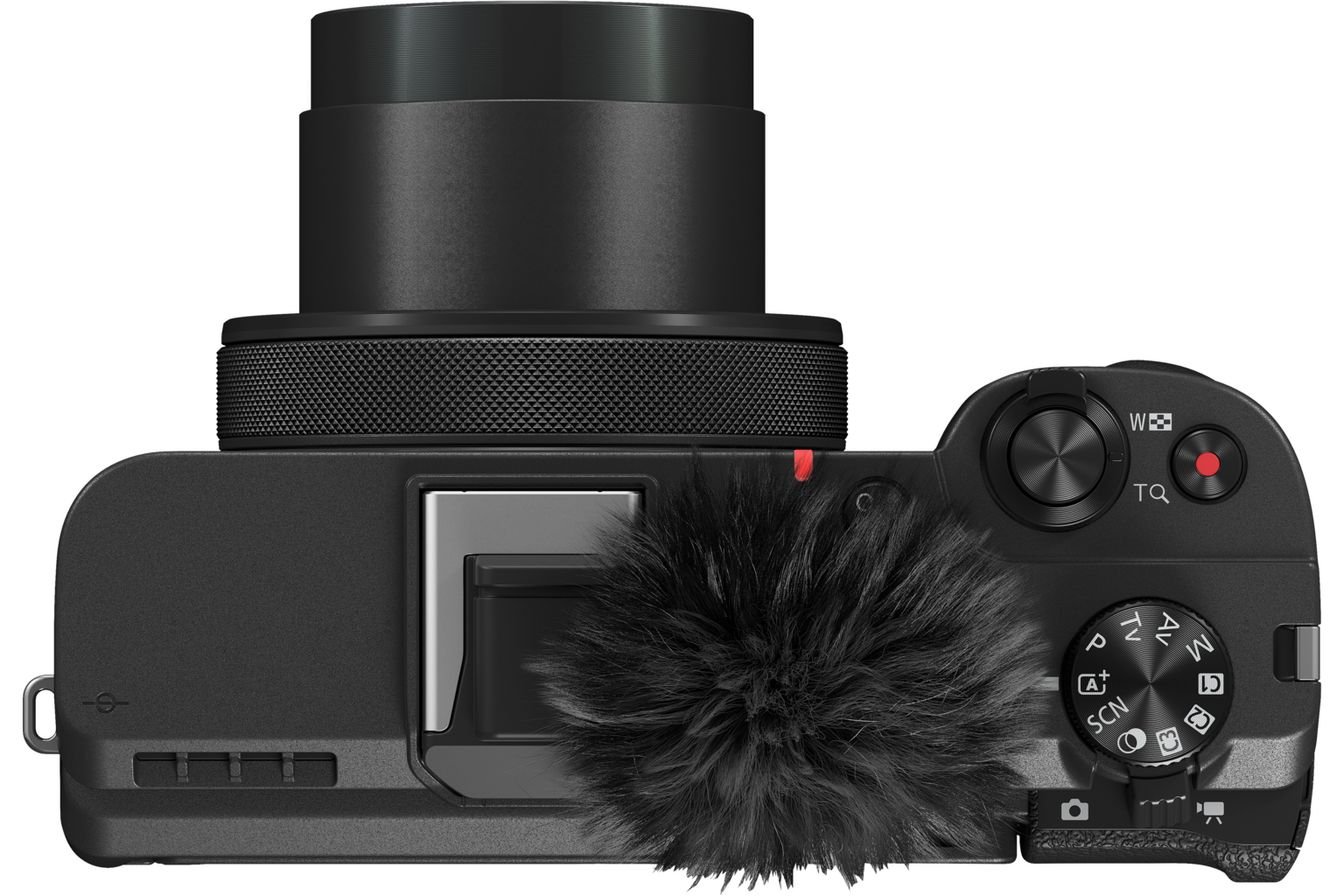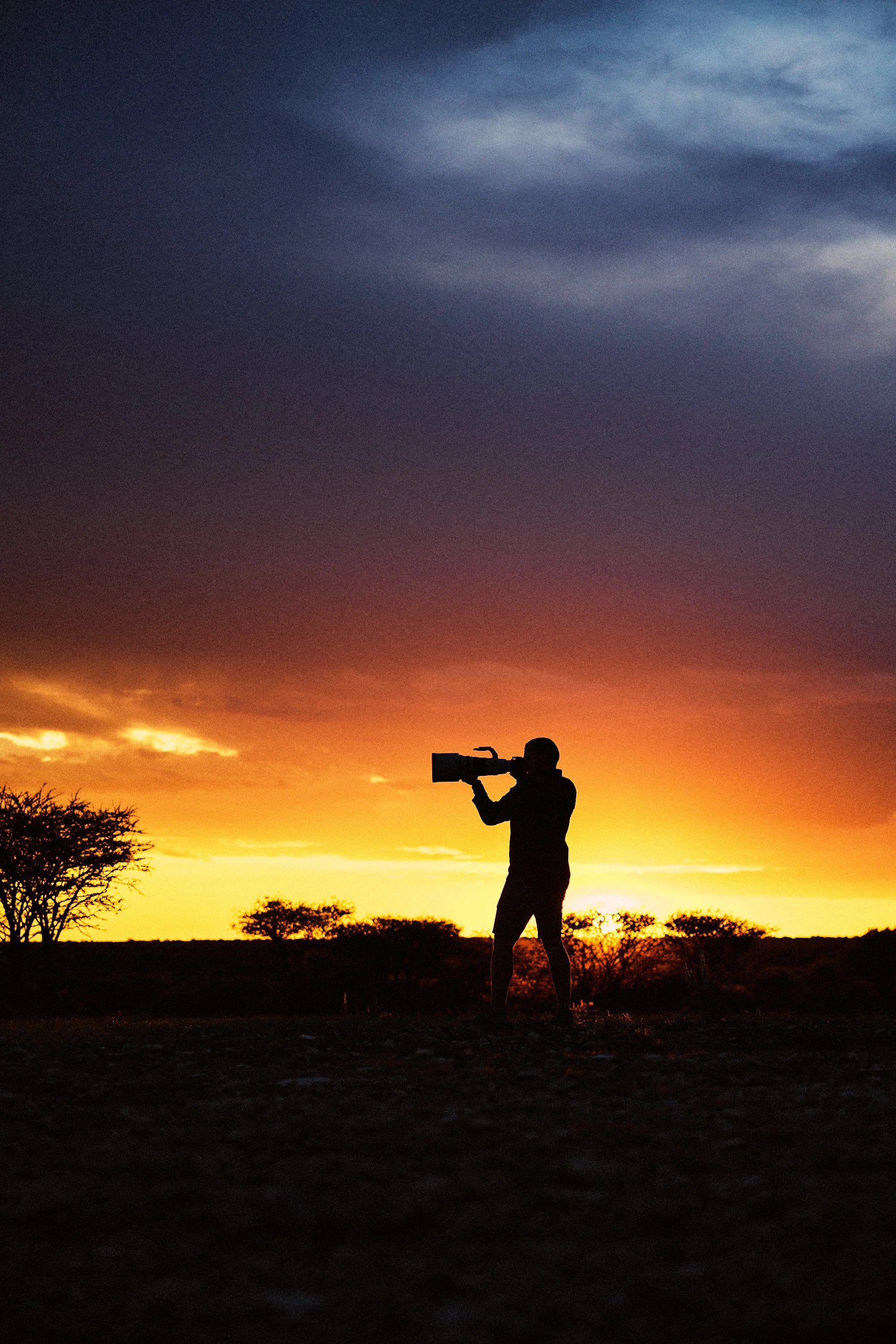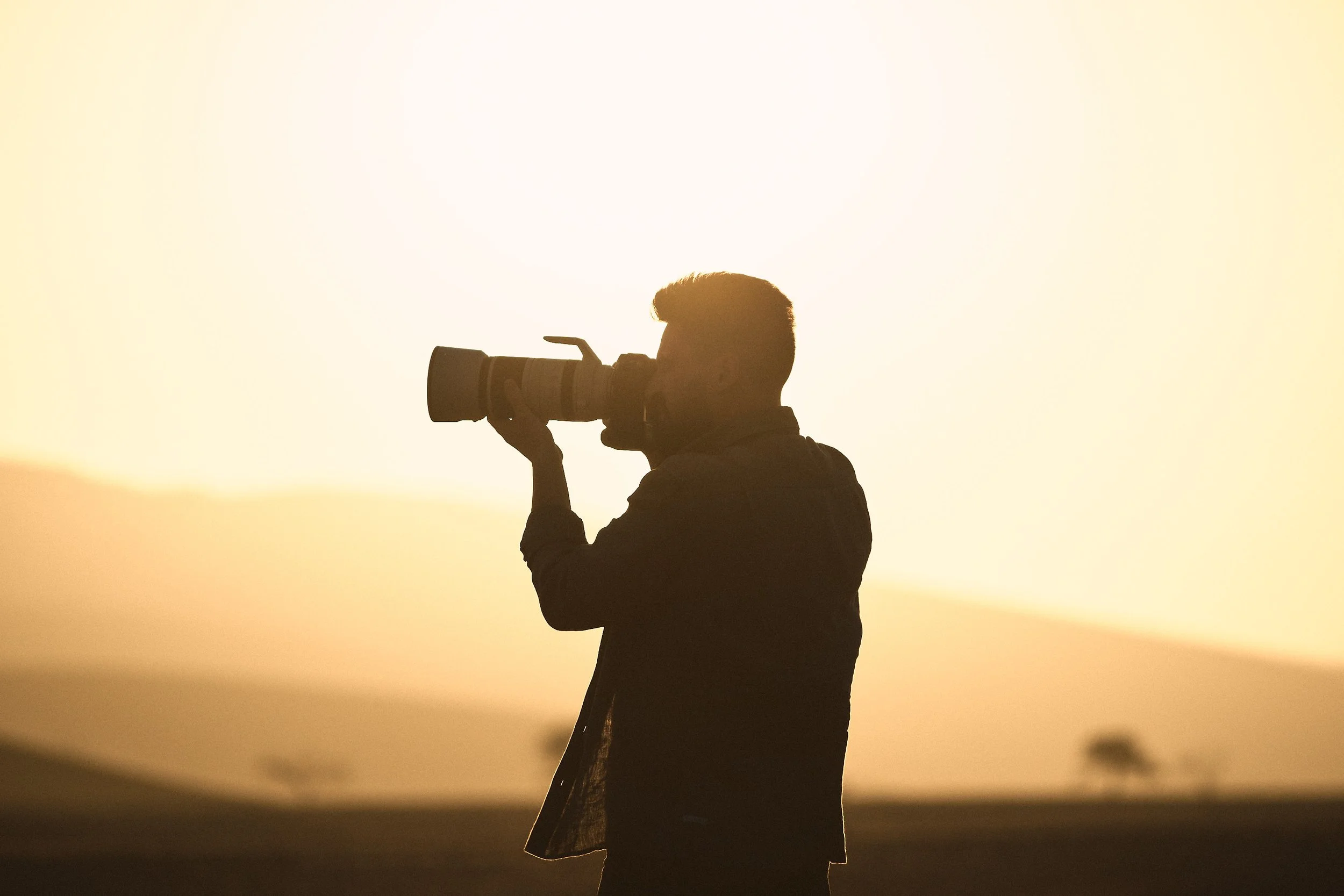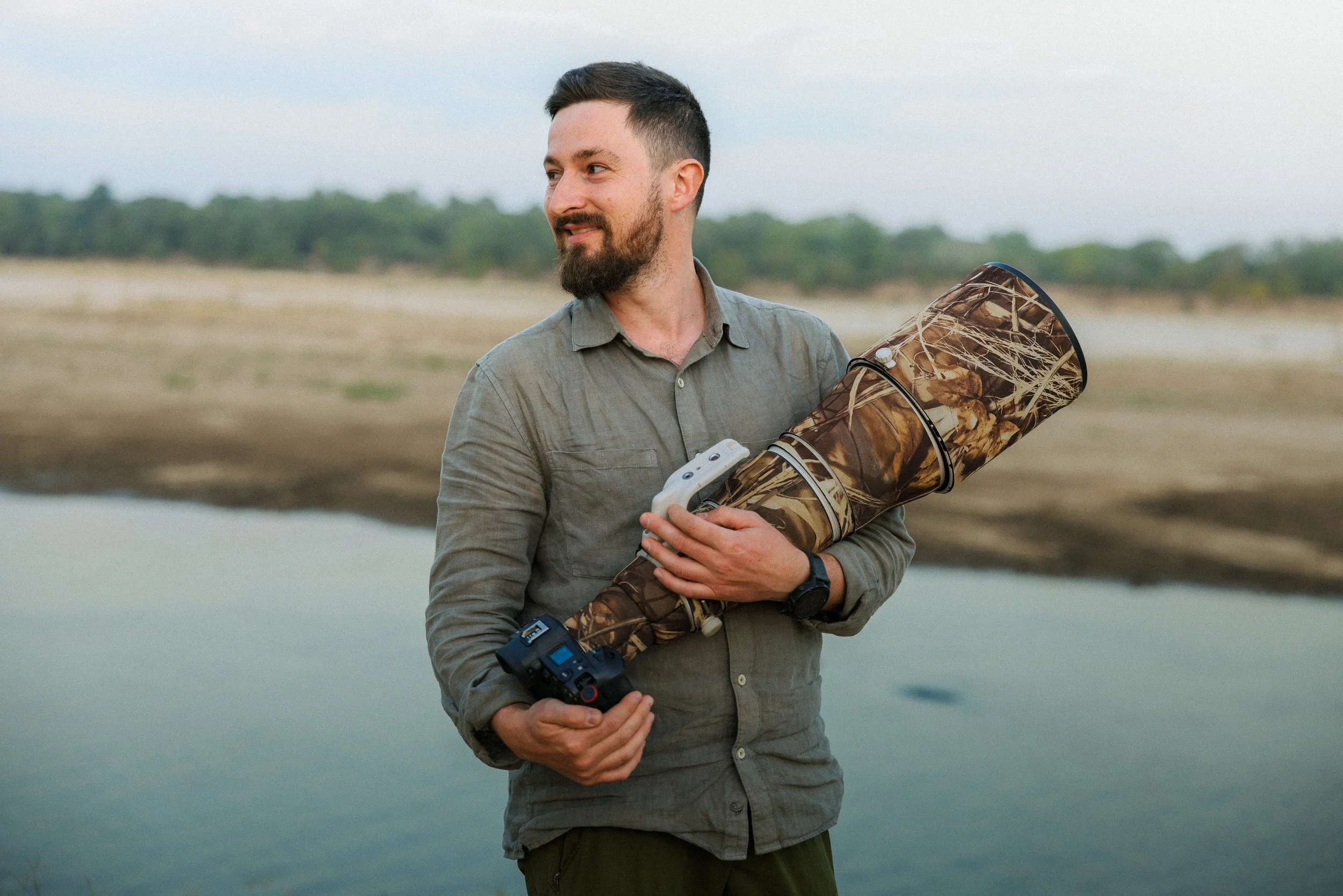What’s in My Camera Bag for 2 Months of Safari Filming and Photography
Planning a photography trip to Africa can feel overwhelming—especially when you're preparing for multiple weeks in remote locations with limited access to electricity, internet, or gear shops.
After years of refining my safari setup, I’m finally happy with my current packing system. In this post, I’ll walk you through the exact gear I’m bringing for a two-month expedition across Botswana and Zambia, including everything from camera bodies to power management, data backups, and the tiny accessories that save the day in the field.
Whether you're planning your first one-week safari or a multi-stop adventure across Southern Africa, this post will help you decide what’s worth bringing—and what you can safely leave behind.
📥 Before we dive in, make sure to grab my free wildlife photography eBook—it’s packed with practical gear advice, shooting tips, and field-tested techniques for your next trip.
👉 Download it here
My Camera System & Bag Setup
For this trip, I’m using the f-stop Tilopa backpack with an XL Pro ICU, which I’ve found to be the most airline-compliant way to carry big lenses and multiple bodies without checking them in.
My Main Camera Body Lineup for Safari and Adventure Filmmaking
When you're spending weeks in the field, facing everything from dusty deserts to humid forests, your camera setup needs to be more than just good—it needs to be flexible, reliable, and ready for anything. Here’s a deeper look at the core bodies I’m bringing on my upcoming trips, and how each one fits into my shooting strategy:
Canon R5 – My High-Resolution Workhorse
The Canon R5 remains one of the most versatile cameras I’ve ever used. It’s my go-to for high-resolution stills, offering 45 megapixels of sharp, detailed images without sacrificing autofocus speed or burst rate. Whether I’m photographing wide landscapes, intimate wildlife portraits, or environmental scenes that require cropping flexibility, the R5 handles it with ease.
It also excels at hybrid shooting—quickly switching from stills to 4K or even 8K video when needed. On safari, that ability to adapt to different storytelling needs on the fly is absolutely priceless.
Canon R3 – The Wildlife Action Specialist
When the action heats up—whether it’s a leopard sprinting across the plains or birds darting through golden light—the Canon R3 is the camera I grab first.
Its incredible autofocus tracking, ultra-fast frame rates, and low-light performance make it the ultimate body for fast-moving wildlife. It’s especially well-paired with my 600mm f/4 lens, giving me maximum reach while still being able to react instantly to the unexpected.
With the R3, I can track and capture split-second moments with a confidence that no other body in my kit quite matches.
Canon R5C – The Cinema Powerhouse
For true cinematic storytelling, I rely on the Canon R5C. This camera gives me the best of both worlds: the stills quality of the R5 combined with the video power of Canon’s Cinema EOS line.
It shoots full-frame 8K RAW, offers 10-bit C-log 3, and most importantly, doesn’t suffer from overheating issues during long recording sessions—something critical when filming wildlife behavior or behind-the-scenes content.
The R5C is my main body for professional wildlife filmmaking, slow-motion sequences, and BTS storytelling that needs high production value.
Canon Powershot V1 – My Everyday Vlogging Tool
This tiny but powerful camera fills a crucial gap in my kit. The Canon Powershot V1 is designed specifically for creators who need quick, spontaneous recording without sacrificing color fidelity or editing flexibility.
It shoots 4K 10-bit C-log 3, meaning it matches perfectly with the footage from my R5C. That’s a huge deal for a compact camera.
I’ll be using the V1 for handheld vlogging, dashboard driving stories, time-lapses, and casual BTS updates—giving me lightweight, ready-anytime access without pulling out my main bodies.
Its portability and ease of use are game-changers for creating daily content during long expeditions.
GoPro Hero 9 – Creative B-roll Machine
Mounted inside the vehicle or on lightweight arms, the GoPro Hero 9 gives me another layer of storytelling.
I use it primarily for dashcam recordings, driving sequences, and unique perspectives that would be impractical or risky for larger gear. Its stabilization, waterproof housing, and compact size allow me to capture immersive, adventurous footage even during rough drives or river crossings.
It's an essential part of the creative kit when I want to bring viewers deeper into the experience without worrying about damage or weight.
Why This Multi-Camera System Matters
Each of these camera bodies has a specific role to play—and together, they give me the ability to seamlessly capture anything that happens.
From wide scenic shots, to fast action bursts, to cinema-grade documentary sequences, I can cover all angles simultaneously, often with multiple cameras rolling at once.
This multi-body setup not only improves the variety and richness of the final content—it also ensures I’m ready for whatever surprises the wild throws at me.
If you want to see exactly how I use this gear on real African safaris, join me on one of my upcoming photography workshops—limited spots are still available for Botswana, Namibia, and Zambia tours.
My Wildlife Lens Kit for Safari Adventures
On a trip that spans multiple ecosystems, from open savannahs to dense woodlands, versatility and redundancy are absolutely key. Every lens in my kit has a very specific role, ensuring I can adapt quickly to different subjects, distances, and lighting conditions without missing a beat.
Here’s a closer look at the glass I’m relying on for this expedition:
Canon 15–35mm f/2.8 – For Storytelling and Scenic Impact
The Canon 15–35mm f/2.8 is my primary wide-angle lens, essential for capturing landscapes, night skies, and behind-the-scenes moments.
When the Milky Way rises over a campfire, or when I want to include dramatic skies and environmental elements around wildlife, this lens delivers stunning results.
Its fast aperture also makes it excellent for low-light situations, allowing me to shoot handheld at dawn or dusk without cranking the ISO too much.
Canon 24–70mm f/2.8 – The Storytelling Backbone
The 24–70mm f/2.8 is the ultimate storytelling lens. It's perfect for blending wildlife portraits with environmental context, giving a sense of scale and atmosphere that tighter lenses often miss.
When an elephant herd crosses the plains under golden light or lions rest beneath stormy skies, this lens allows me to frame both the subject and the stunning environment together.
It’s also a crucial tool for travel documentation, lodge photography, and casual moments during downtime in camp.
Canon 100–300mm f/2.8 – My New Go-To Action Lens
Replacing both my 70–200mm f/2.8 and the 100–500mm, the Canon 100–300mm f/2.8 has quickly become my workhorse for handheld action photography.
It offers the flexibility of a zoom with the speed and light-gathering power of a prime, making it ideal for dynamic wildlife encounters where subjects move fast and distances change constantly.
Mounted on the Canon R5, this lens will be my main tool for fast, spontaneous stills, and its compact size makes it perfect for long handheld sessions from the vehicle window.
Canon 600mm f/4 – The King of Wildlife Portraits
When it’s time for serious wildlife portraiture, the Canon 600mm f/4 remains unbeatable.
This lens delivers stunning background separation, incredible sharpness, and enough reach to photograph shy or distant animals without disturbing them.
I'll typically use it for static setups—beanbag-mounted shots of predators, birds, or distant mammals in open terrain—especially in places like South Luangwa or Etosha, where long-range opportunities are common.
Canon 100–500mm – Dedicated Video Zoom
While the 100–500mm used to be part of my stills kit, on this trip it’s taking on a new role: it will stay permanently mounted on the R5C for long-form wildlife video capture.
Its extended range allows me to frame wide environmental scenes or tight animal behavior shots without needing lens changes during critical moments.
At f/7.1 on the long end, it’s not the fastest lens, but for well-lit daytime filming, it's more than adequate—and the flexibility it offers is unbeatable.
Canon 1.4x Teleconverter – Smart Extra Reach
Finally, I’m bringing the Canon 1.4x Teleconverter, a small but powerful addition to the kit.
When paired with the 100–300mm f/2.8, it turns into a 140–420mm f/4, still razor-sharp and fast enough for action. When attached to the 600mm, it creates an 840mm f/5.6 setup, perfect for smaller subjects or distant wildlife scenes, particularly useful in open environments like the Central Kalahari or Etosha’s vast pans.
Tripods & Support Gear for a Safari Photography Expedition
Capturing sharp, cinematic wildlife footage—and even tack-sharp stills in challenging light—requires much more than just good camera technique. Stable support gear is essential, especially when working from vehicles, in windy open environments, or when filming long, smooth sequences.
Here’s the full support system I’m relying on for this safari adventure:
Fluid Head Video Tripod – My Foundation for Cinematic Wildlife Filming
For high-quality wildlife video, a fluid head tripod is non-negotiable.
I’m bringing along my trusted Manfrotto 755B tripod, paired with a Manfrotto 501 fluid head.
Even though this setup is a bit older, it remains incredibly reliable and delivers exactly what’s needed: smooth, controlled panning and stable lock-offs during long filming sessions.
The 501 head allows for consistent drag when tracking moving animals like lions or elephants across open terrain, creating that cinematic feel that handheld shooting simply can’t replicate.
It’s sturdy enough to handle heavier setups like my Canon R5C with the 100–500mm lens, even when fully zoomed in.
Lightweight Travel Tripod – Compact Stability for Stills and General Use
For photography-specific work and general support, I’m bringing my Manfrotto 190CXPRO4—a lightweight carbon fiber tripod that offers the perfect balance between portability and stability.
This tripod comes into play when shooting landscapes, night photography (like Milky Way shots in Namibia), or low-light wildlife scenes where slower shutter speeds demand rock-solid support.
Thanks to its compact size and relatively light weight, it easily fits into my checked luggage or straps neatly onto the side of my camera backpack.
And with the center column that can flip horizontally, it’s also great for creative low-angle compositions.
Gorillapod – The Ultimate Tool for Quick Setups and Creative Angles
Rounding out my support kit is the trusty Joby Gorillapod.
This flexible mini-tripod is a game-changer for on-the-fly setups—perfect for mounting cameras on dashboards for dashcam footage, wrapping around branches or railings for creative vlogging angles, or setting up quick timelapses and roadside b-roll without hauling out a full tripod.
It’s light, packable, and incredibly versatile—a small tool that punches way above its weight.
Together, this trio covers everything I need:
Smooth cinematic pans for professional-looking wildlife footage
Stable long exposures and low-light stills
Flexible creative options when documenting behind-the-scenes moments
Lightweight, manageable setups that won’t bog me down in the field
All three pieces fit efficiently into my checked luggage or are integrated into my vehicle setup once I’m on location.
This careful balance between stability and portability means I’m always ready—whether I’m filming from a moving 4x4, shooting dramatic landscapes, or quickly capturing a spontaneous wildlife encounter.
Audio, Filters & Must-Have Accessories
When you’re filming professional wildlife content—or even just documenting your own adventures—good visuals are only half the story.
Clean, immersive audio and creative control over light are what really take your work to the next level.
Here’s the essential kit I’m bringing to make sure every piece of content sounds great, looks polished, and survives the rough realities of safari life:
Audio Setup – Capturing Clean, Professional Sound in the Field
Even the most beautiful footage feels amateur without strong audio, so I'm building redundancy into my setup:
🎤 Rode VideoMic NTG – Directional Shotgun Mic for Natural Soundscapes
Mounted directly on the camera, the Rode VideoMic NTG is my go-to directional microphone.
It picks up clear, isolated audio from the subject while rejecting ambient noise from the sides and rear—perfect for recording commentary, vehicle sounds, or distant wildlife calls without capturing too much wind or background chatter.
Its compact size and USB-C recharging capability make it ideal for fieldwork where weight and charging logistics matter.
🎙️ Rode Wireless Pro – Lavalier System for Interviews and Mobile Vlogging
The Rode Wireless Pro system is essential when I want freedom of movement without losing audio quality—whether it's capturing interviews at lodges, gear talks in the field, or mobile BTS vlogging during drives.
It’s ultra-compact, has great range, and records internally as a backup—a lifesaver if the wireless signal gets sketchy in remote areas.
🛡️ Backup Shotgun Mic – Redundancy Is Key
Gear fails—it’s just a fact when you’re deep in the bush, hours from the nearest camera store.
That’s why I always pack a backup shotgun mic. It adds minimal weight but provides peace of mind, ensuring that I can always record clean sound even if my primary mic encounters problems.
Filters – Managing Harsh Light and Boosting Creative Control
Shooting in Africa often means dealing with intense, harsh light. Filters are essential tools to stay in control of exposure and color:
🛡️ ND Filters – Essential for Proper Exposure in Bright Conditions
I bring neutral density (ND) filters to cut light without affecting color, allowing me to shoot at slower shutter speeds or wider apertures even in midday sun.
They are critical for maintaining cinematic motion blur in video and for controlling depth of field creatively.
🌀 Polarizer – Cutting Glare and Enhancing Skies
A circular polarizer helps reduce glare on water, wet surfaces, and animal fur, while also deepening blue skies and enhancing contrast.
It’s a simple but powerful tool for making safari scenes pop without heavy post-processing.
Must-Have Field Accessories – Keeping Gear Running Smoothly
The boring but absolutely essential category: the stuff that keeps the entire production going smoothly day after day in remote locations.
🔋 10+ Spare Batteries (Canon R5 & R5C) + 2x R3 Batteries
When you’re shooting long days, capturing early morning light, midday wildlife, sunset scenes, and nighttime BTS footage, battery life becomes mission-critical.
I pack more than 10 spare LP-E6NH batteries (for the R5 and R5C) and at least two LP-E19 batteries (for the R3) to avoid ever running out of power mid-shoot.
⚡ Dual and USB-C Chargers – Fast, Flexible Recharging
Keeping batteries topped up while traveling between lodges or charging off a solar setup means I need multiple chargers, including USB-C options that plug into portable power banks or in-car outlets.
🧽 Cleaning Tools – Protecting Sensors and Lenses
Blower for removing dust and debris from sensors and lenses
Sensor wipes for careful on-site sensor cleaning when needed
Microfiber cloths for wiping lenses without scratching Daily cleaning routines prevent frustrating problems like sensor spots or soft images caused by dirt.
🛠️ Gaffer Tape and Cable Ties – Ultimate Field Repair Kit
Whether it's securing loose dashcams, fixing gear to a vehicle, or temporarily patching tripods and bags, gaffer tape and cable ties are absolute lifesavers.
I always carry a few rolls tucked into every gear bag.
Backup Strategy & Power Management
When you're traveling deep into remote wilderness—days away from reliable electricity—protecting your databecomes just as important as capturing it.
Wildlife photography trips are often once-in-a-lifetime experiences, and losing footage or photos simply isn’t an option. That’s why I build serious redundancy into my backup system:
📂 Backup Workflow – How I Keep My Files Safe in the Wild
🎞️ Multiple SD and CFexpress Cards – Room to Shoot Freely
I carry enough SD and CFexpress cards to shoot for several days without having to format or overwrite anything.
This approach means I can work with confidence during intense days in the field—even if unexpected sightings or creative bursts fill my cards faster than planned.
💾 Two 4TB SSD Drives – Fast Daily Backups
Each evening, I back up all new footage and photos to two identical 4TB SSDs.
SSD drives are not only shockproof and durable (important when you're bouncing around on rough roads), but they also allow for fast transfers—saving precious time when you're exhausted after a long day out.
🖥️ Two 5TB HDD Drives – Long-Term Storage & Extra Redundancy
In addition to my SSD backups, I maintain a third backup copy on 5TB rugged hard drives.
While slower and bulkier than SSDs, these drives are perfect for archival storage, ensuring that even if something happens to the faster drives, the data is still safe.
⚡ Power Management – Staying Charged Off-Grid
🔋 Goal Zero Sherpa 100 – Versatile, High-Capacity Power Bank
When you're away from lodges or grid power for days at a time, a strong power solution is non-negotiable.
The Goal Zero Sherpa 100 lets me recharge cameras, laptops, batteries, and phones multiple times.
It has USB-C PD outputs (essential for fast charging modern devices) and AC ports for added flexibility.
☀️ Small Foldable Solar Panel – Infinite Recharging Option
For extended periods in remote campsites, I bring a compact, foldable solar panel.
When paired with the Sherpa, it gives me an essential renewable energy source to keep the mission alive—especially important on longer trips into the Central Kalahari, Savuti, or South Luangwa.
🔄 Why This Backup Routine Matters
Backing up every evening has become a non-negotiable habit for me—it’s part of the rhythm of the trip, just like charging batteries and cleaning gear.
Three separate copies of every file (cards, SSD, HDD) gives me total peace of mind, knowing that no technical issue, theft, or accident will erase the irreplaceable images and footage collected in the field.
🎯 Want to learn how to build your own bulletproof field workflow?
👉 Join one of my upcoming wildlife photography workshops where I’ll teach you not just how to shoot better—but how to safeguard your hard-earned files like a pro.
Daily Vehicle & Field Kit
When you're on a safari, you can't afford to be rummaging through bags when an opportunity appears—or worse, realizing you forgot something essential back at camp.
That’s why I always keep a compact, carefully thought-out field kit within immediate reach.
🧰 Key Items Always Within Arm’s Reach
🛠️ Multitool or Knife – The Unsung Hero
A solid multitool or knife is invaluable for quick fixes—whether it’s tightening a tripod screw, adjusting a dashcam mount, cutting cable ties, or even helping with small vehicle or gear repairs.
It’s amazing how often it saves the day.
🔦 Headlamp – Essential for Pre-Dawn and Night Shoots
A good headlamp is a total must for early morning drives, camp setups, or nighttime photography.
I always use one with a red-light mode to preserve night vision, making it easier to see without disturbing animals or wrecking my own eyes' adjustment to darkness.
📓 Notebook & Pen – Capturing Creative Sparks
Despite the digital age, I never leave camp without a small notebook and pen.
I use it for sighting logs, story ideas, shot lists, or just capturing fleeting creative thoughts that pop up while spending hours in the field.
🧵 Velcro Strips & Straps – Field Multi-Tool
Velcro strips and cable straps are among the most underrated items in my kit.
They’re endlessly useful for securing dashcams, organizing cables, mounting microphones, or even keeping lens caps handy.
They weigh almost nothing, take no space, and solve countless problems on the fly.
🧳 How It All Fits
All of these essentials stay packed in a secondary shoulder bag or small daypack that I keep by my side inside the safari vehicle at all times.
This means I’m ready for anything—whether it's a sudden downpour, a flat tire, an impromptu roadside shooting opportunity, or just needing to jot down a new creative idea without missing the moment.
This might sound like a lot of gear—and it is—but when you're shooting professionally over several weeks in extreme conditions, it’s better to have exactly what you need than to scramble last-minute in the field.
Everything I’ve listed here is battle-tested. It’s designed to support stills, video, BTS content, data safety, and smooth workflows while moving between camps and locations in Botswana and Zambia.
If you're planning your own trip soon—whether it's your first or your fiftieth—hopefully this guide gave you some clarity.

























